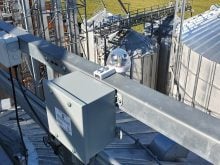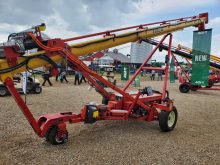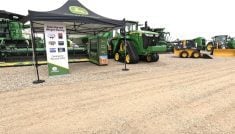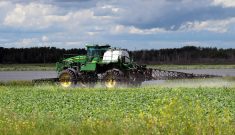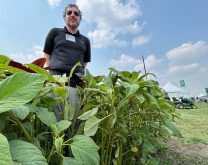Ryan Flaman normally doesn’t sell display units out of the Ag in Motion show booth, but the Montana farmer was insistent.
“I said, ‘whoa, I can’t really deliver this to you on the weekend, can I? So how do we do this? That one’s actually sold already,’” he says.
“So then we got creative; we switched and juggled things around.”
Read Also
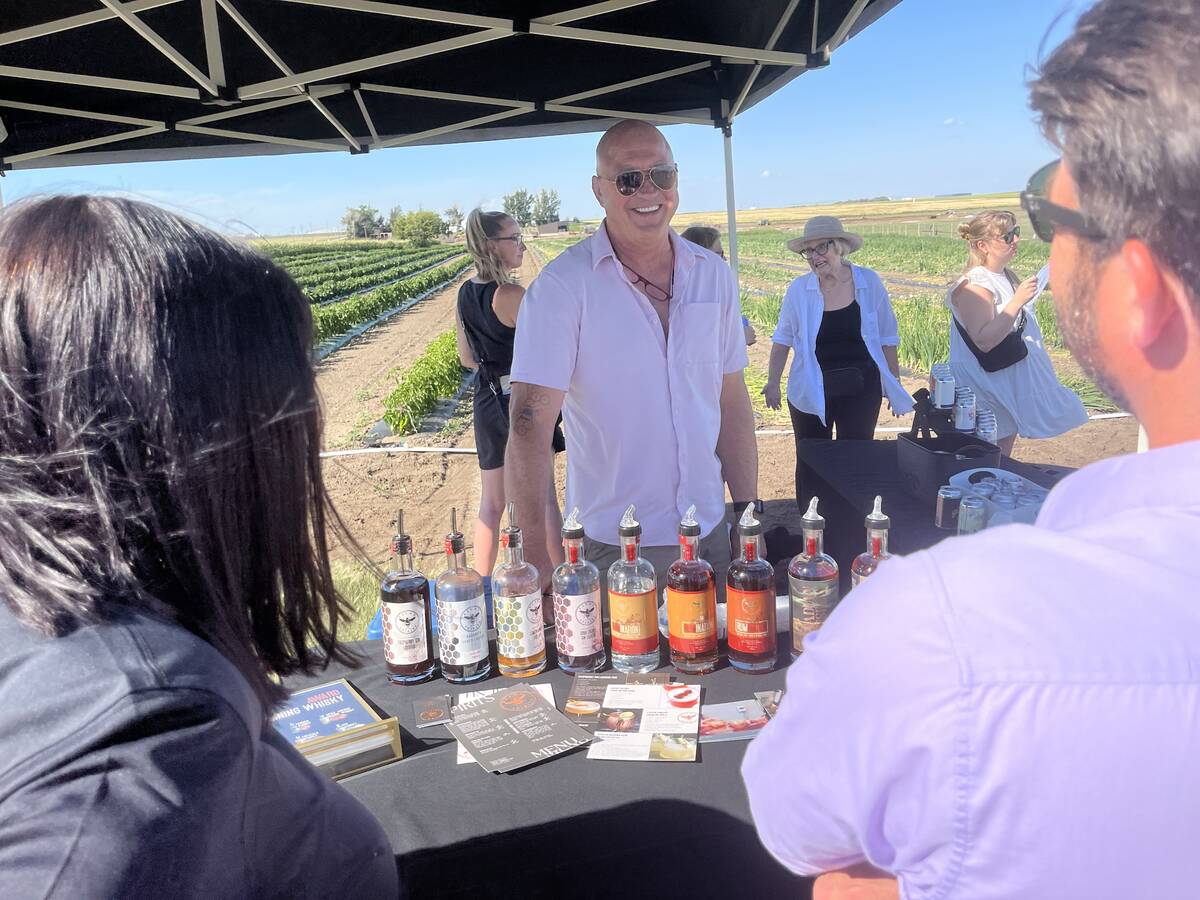
From farmer to award-winning distiller
Pivot Spirits showcases transition from farmer to distiller with provincial award-winning results in Alberta for Lars Hirch
At the end of the day, the Montanan had a new Quick Response fire suppression system on the back of his truck to take home and provide an extra level of protection against combine fires, just in time for harvest.
Flaman had to spend the rest of the show walking customers around the hydraulic-driven version of the unit, explaining that he also sells gas-powered version; it just wasn’t there right now.
Strong demand for the units has been a bit of a surprise.
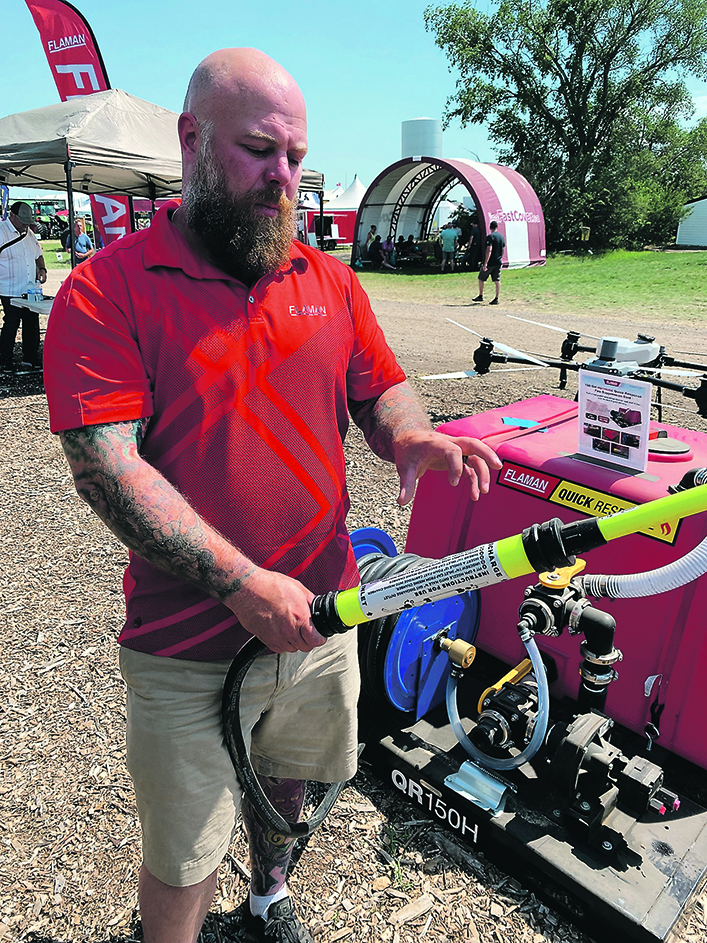
“We thought if we sold two dozen the first year, that’d be good,” he says. “We’ve sold 75 already.”
Flaman conceived of the idea after years of offering pumps, tanks and pre-built units from another supplier that just didn’t seem to do it.
“What they had wasn’t what our customers wanted,” he says.
He decided to consult customers directly with an informal Facebook poll. As an ag supplier, the Flaman Group has a lot of farmers — and volunteer firefighters — among its customers and online audience.
“I just started asking customers, ‘if there was an ideal unit, what would it look like to you?’ I just started asking customers questions, and all the stuff they told me, that’s what we did.”
The first concept was to provide a way to combat combine fires with equipment already close at hand — in this case, the grain cart.
They came up with a unit that mounts on the grain cart (Flaman sells J&M carts), featuring a 150-gallon tank, 100 feet of hose and a two-inch Honda pump restricted down to three-quarters of an inch to throw a stream of water or fire-retardant foam about 30 feet.
The first units featured a gas motor, but feedback from farmers sent them back to the drawing board to develop a hydraulic version to give farmers the option to power it directly from the tractor on the grain cart.
“The nice thing is with a gas-powered engine, they work; they’re great,” Flaman says.
“But bounce around on the field and the dust, sometimes that gas engine, if it gets flooded, the float sticks on the carb or whatever. The hydraulic, when you turn on, it’s on. There’s no ifs, ands or buts.”
The whole system is contained on a metal skid with a custom-manufactured tank that allows it to slide into the back of a pick-up truck if desired.
“If something happens, it’s in that truck. It’s ready to go,” Flaman says.
“It’s not going to replace a fire truck, it isn’t. But the whole thing, and it’s right there in the name, is ‘quick response.’ It’s to help keep that fire at bay until the fire truck gets there.”
Flaman says rural first responders have been enthusiastic about the units because it would allow them to get to a fire more quickly in rural areas and lake country. After reminding them repeatedly that the existing units are designed primarily for combine fires, he reconsidered. If customers need more capacity, for a different purpose, why not give it to them?
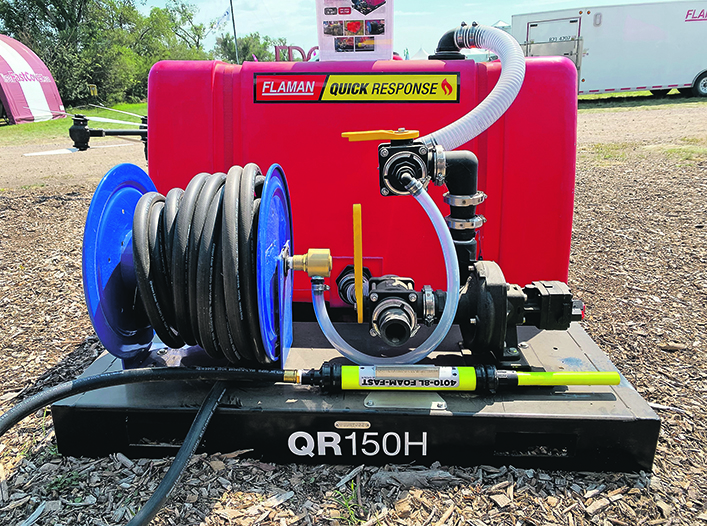
This led to the larger version of the quick response unit, intended to be mounted on a one-ton truck such as those fitted with service beds for forestry work. The unit features a 300-gallon tank, a bigger hose, spaces to mount carrying hooks for equipment such as shovels and axes, and a more powerful pump.
“This one has a wildland certified pump,” Flaman says.
“They’re certified with all the fire departments. This is more for a fire department or RM.”
It could also be used in lake communities, where the nearest fire department is a long ways off.
“My parents, their cabin, the closest town is 25 miles away,” he says.
“By the time they get everyone assembled and out there, you’ve lost two, three, four cabins, where if you have this thing out there, you might be able to get it under control.”
Contact michael.robin@producer.com



